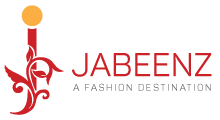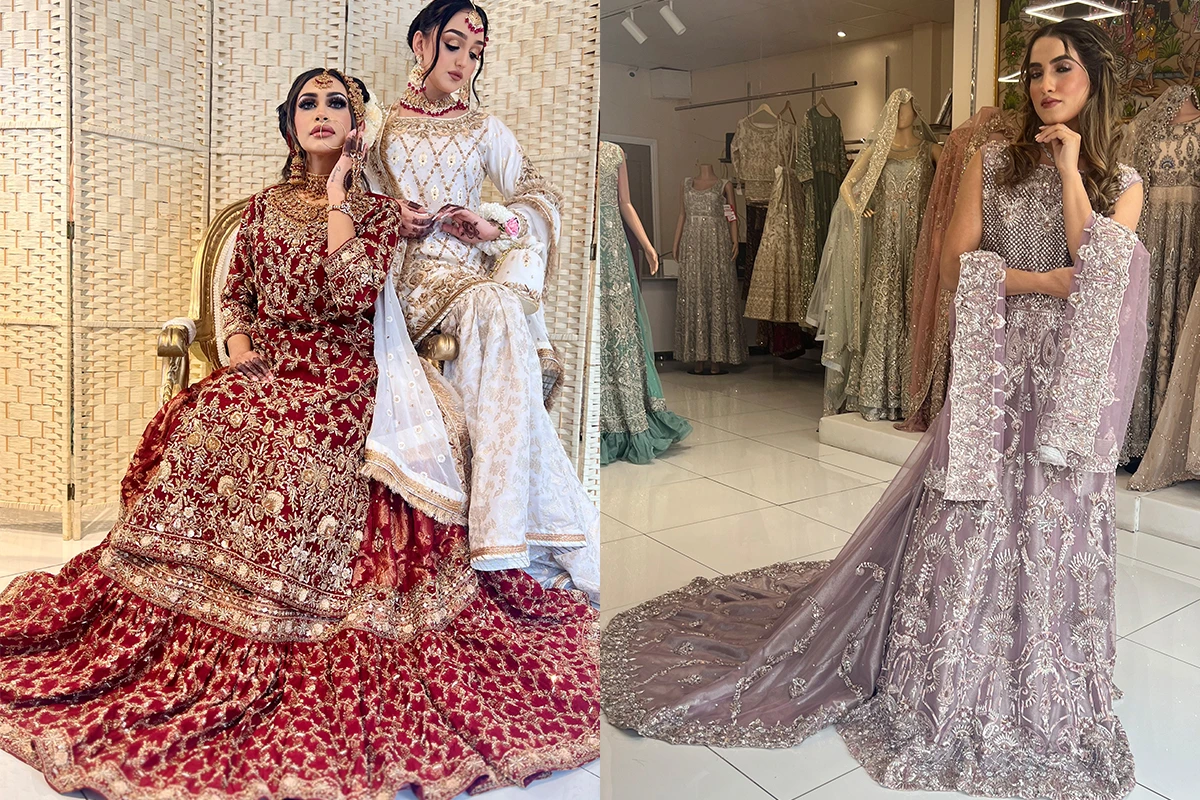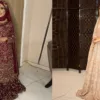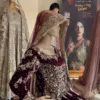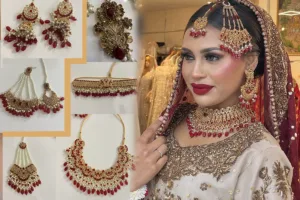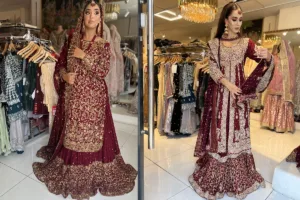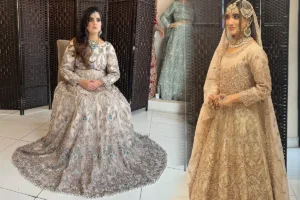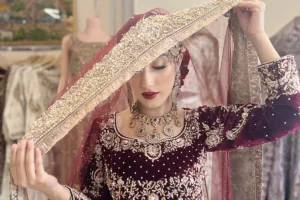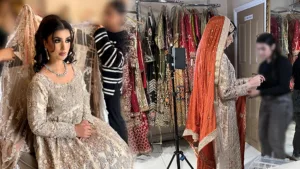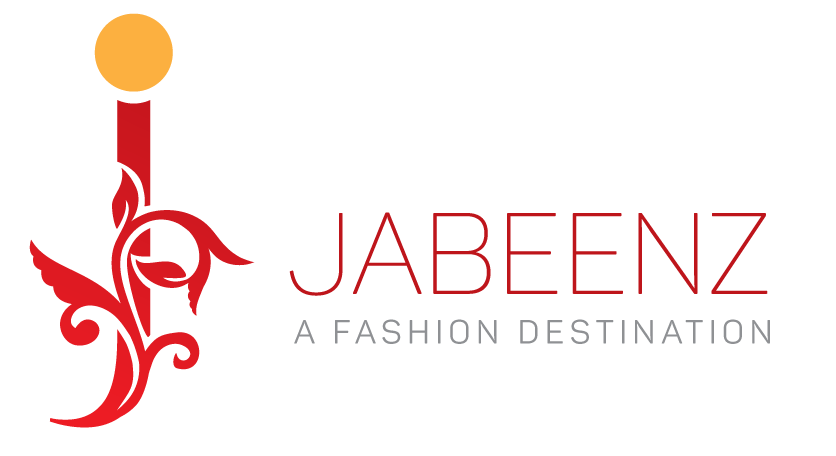Traditional vs. Contemporary Pakistani Bridal Wear: Bridging Heritage and Modern Elegance
The Pakistani bridal fashion is a splendour of history and culture as well as growing creativity. To the soon-to-be brides, the path towards having their dream outfit is usually filled with emotional decision-making: classic vs. modern bridal dress. Both styles are beautiful and charming in their own ways. Each suits the personality, values and visions of a particular person. This blog delves into the differences between the two and why a large number of modern brides are opting to combine them into a unique declaration.
Customary Bridal Dress: Paying Absence to Traditions
The Pakistani bridal clothes have centuries of culture behind them. Such outfits commonly cover all affluent histories of Mughal and Persian impacts. This include traditional forms such as lehenga choli, gharara, sharara or farshi lehenga. Artisans heavily embroider these ensembles using zari, dabke, gota, and resham. They are costumed with rich fabrics such as jamawar, velvet, silk and banarsi.
Traditional wear mainly involves colours; the reds, the maroons and the golds have always been used to signify love, wealth and good luck. Generations of artisans have inherited and passed down this elaborate craftwork. Each artisan creates more than a dress—they shape a piece of cultural heritage.
Most brides do use traditional clothes because they want to follow family customs, their beliefs, or just because of the classical beauty such clothes possess. A classical bridal would also have large jewellery, heavy dupattas and a royal feel that would reflect in bridal pictures in historical paintings or historical wedding albums.
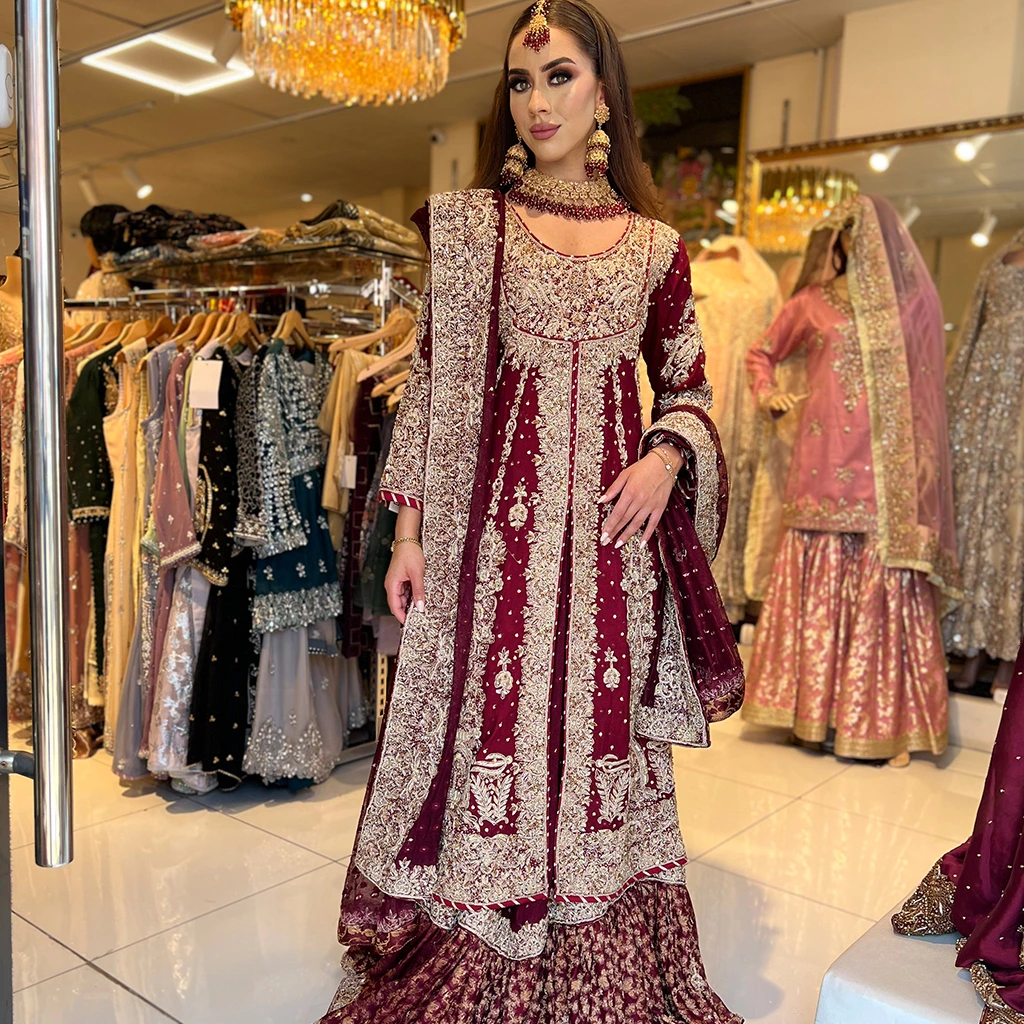
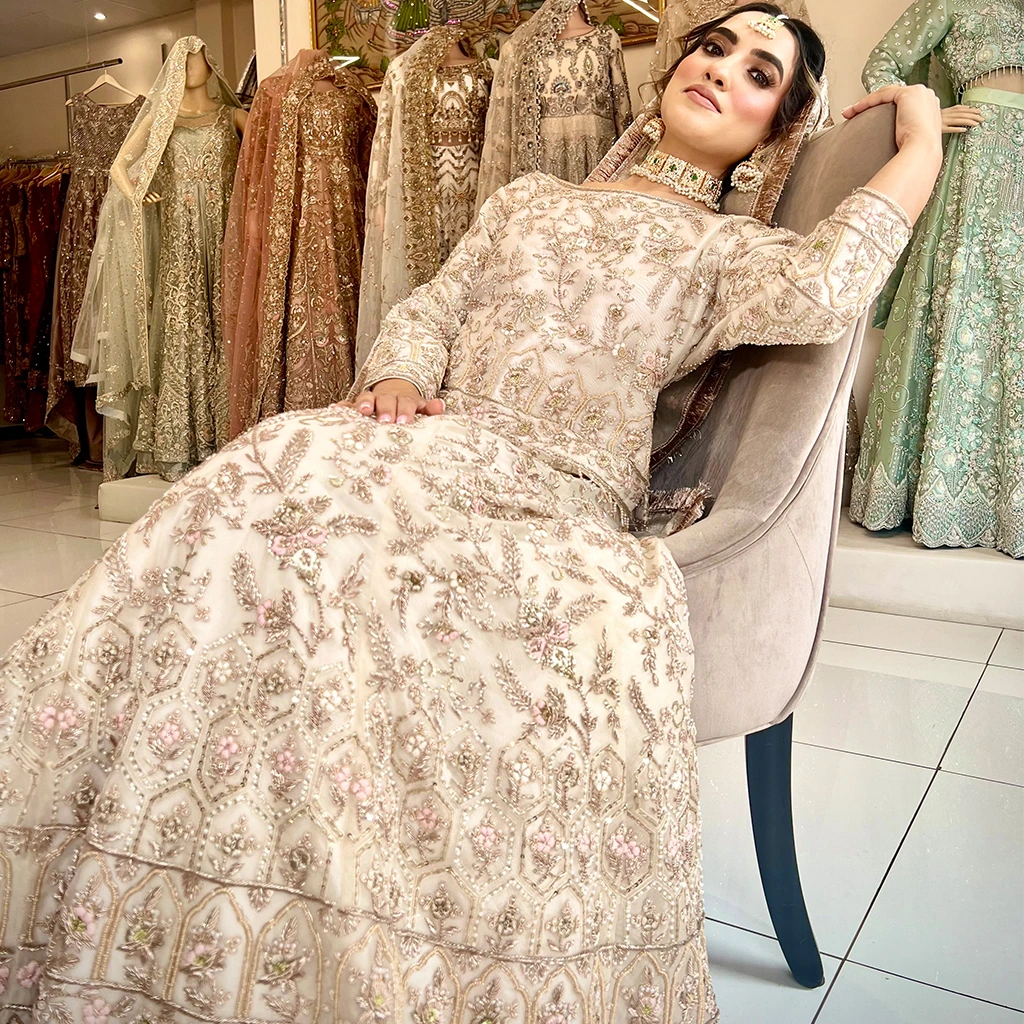
Modern Bridal Wear Beauty: The Modern Language
The modern wedding fashion in Pakistan is all about transgressing and becoming personal in style. Although it is still based on a tradition, modern designs have restyled the bridal wear through minimalism, experimentation in cuts and a wider spectrum of colours. New brides no longer fear to use pastels, ivory, icy blues or even blacks as their wedding colours.
Designers have started to merge the world with Pakistani artisans. Tailored dresses with all those conservative decorations are in fashion. As well as sleek jumpsuits with an embroidered cape or along with a flowy maxi with little embroidery. Even the modern brides choose lightweight attires, which focus on being comfortable and do not forget about being elegant.
Modern bridal dresses indicate the turn to personalisation. The bride would like to write their own narration sometimes with fabric selection. The shape, the embroidery styles, or even the fusion attire with a combination of the eastern and western styles.
A Trend of a Fusion: The Best of Both Worlds
The most exciting thing is that today the brides are setting new and different standards by offering a mixture of the two styles. A traditional lehenga and modern-day off – shoulder blouses, or classic sleek gota work embroidery on pastel fabrics – that kind of combination can be used and one will still have the ability to flaunt the heritage yet at the same time be VERY unique.
The diversity of events included in a contemporary South Asian wedding, with their respective shaadi looks, mehndi looks, and walima looks now combine to give brides an opportunity to design an entire wardrobe that gives a hint or two about their style, mood, and tastes.
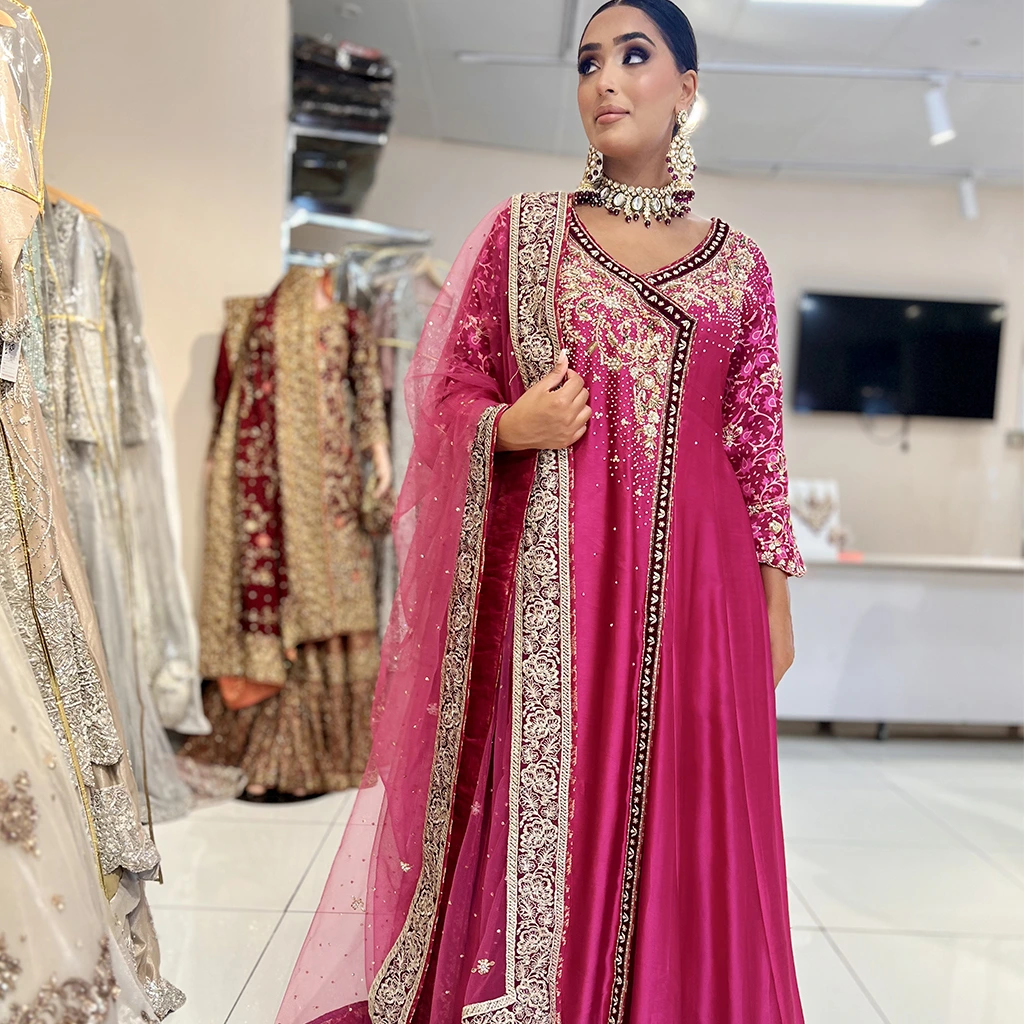
Conclusion
The choices of letting yourself transition into the grandeur of traditional Pakistani bridal wear or the elegance of the modern style are not the right or wrong choice. What counts the most is how the outfit makes you look -confident, beautiful and yourself. Finally, bridal fashion is all about love, tradition, and individuality. They all should make every bride beautiful in her way.
